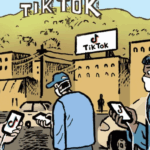 However one feels about the merits of FarmVille, it’s undeniable that the game’s creators know a thing or two about app monetization.
However one feels about the merits of FarmVille, it’s undeniable that the game’s creators know a thing or two about app monetization.
To that end, Red Hot Labs – a game dev startup founded by the team that created back-in-the-day blockbusters FarmVille and CityVille – released Toro on Wednesday, a new tool aimed at helping app developers make the most of Facebook. Red Hot is in the process of becoming a Facebook Marketing Partner.
“No matter what kind of app you’re building, whether it’s an ecommerce app or a game, when it’s time to take it to the marketplace, you go to Facebook because they have a great platform to target audiences,” said Red Hot Labs co-founder Amitt Mahajan, who left Zynga for the startup world in December 2011, the same month Zynga filed for its epically disappointing IPO.
And Facebook’s great – if you know how to use it, Mahajan said.
“There are a dizzying number of option for how to do the targeting and how to interpret the results,” he said. “Most people are actually targeting very broadly and don’t use the segmentation features correctly, which means they see poor results coupled with the high cost of installs.”
Toro’s value proposition is pretty straightforward: to make it easier for users to generate better quality app installs on Facebook. Users can create multiple split tests for targeted campaigns, rebalance budget and bids on the fly based on campaign performance and track post-install metrics, including user lifetime value (LTV). Toro is integrated with several mobile measurement partners, including German app attribution provider Adjust.
It’s probably safe to say that nearly every app developer on earth is obsessed with user acquisition – and for good reason. What’s an app if it doesn’t have users? But some of the metrics developers are using to make their acquisition decisions aren’t as handy as they might seem to be on the surface.
One salient example is cost per install (CPI). According to a study conducted by VentureBeat in June, although the majority of app developers gravitate towards CPI as their number one metric – if CPI is less than LTV, then it’s game on – CPI is actually the least financially viable user acquisition benchmark out there. And that’s because there’s life beyond the install. Low CPIs don’t necessarily mean high LTV. If you spent $5 on an install, and lifetime user value is $6, you haven’t gained all that much in the way of revenue and if your user doesn’t stick around, you don’t have much to show for your investment.
“That’s why we’re also focusing on post-install, downstream metrics, which means turning someone into a real customer – and then maybe even a repeat customer,” Mahajan said.
Toro, now generally available, was in beta since September. Around 30 paying Red Hot Labs customers are currently using the tool with good results, including Burner, a mobile app that enables users to create temporary on-demand phone numbers. Burner lowered its CPI by 32% since tapping into Toro.
It all comes down to targeting and optimization, said Burner CEO and co-founder Greg Cohn. The result? Higher quality downloads at a lower price.
“When you have a great product and your market has been validated, the main challenge is finding the best method to reach that market while avoiding low-quality installs that don’t convert,” Cohn told AdExchanger. “When managed by hand, this is a very time-consuming and inefficient process.”
It’s an issue Mahajan is aiming to address with Toro based on his experience at Zynga, where he and his team were laser-focused on user growth.
“We were building own own tools to generate hundreds of micro-targeted campaigns and we found that we were getting much better results,” he said. “But it takes a lot of time to set all that up using the native Facebook tool. That’s why we developed an algorithm to manage the day-to-day. It’s a set-it-and-forget-it type of product so developers can go back to focusing on building great apps.”
Red Hot Labs, which has a headcount of seven, including contractors, raised a $1.5 million seed round in February 2013 through several investors, including Greylock Partners, SV Angel and General Catalyst Partners. According to Mahajan, the company is now profitable and hasn’t had to raise more money since, although he didn’t rule out the possibility of looking for additional funding down the line.















